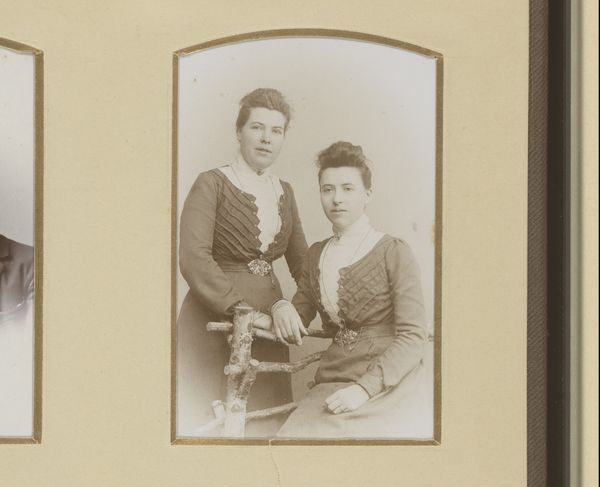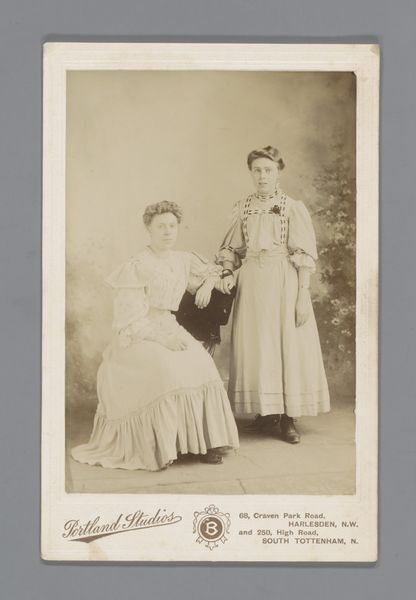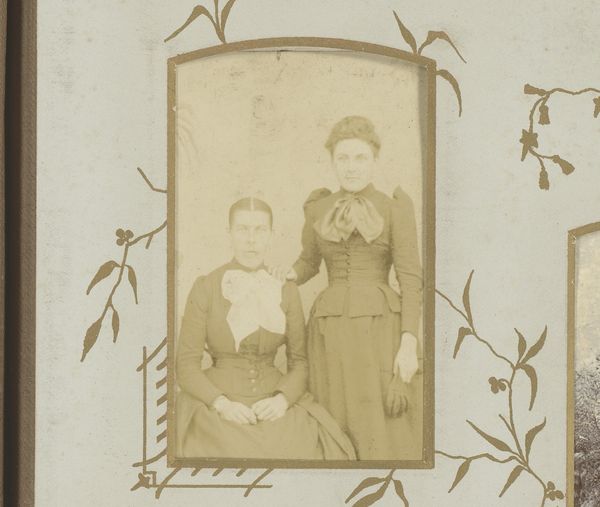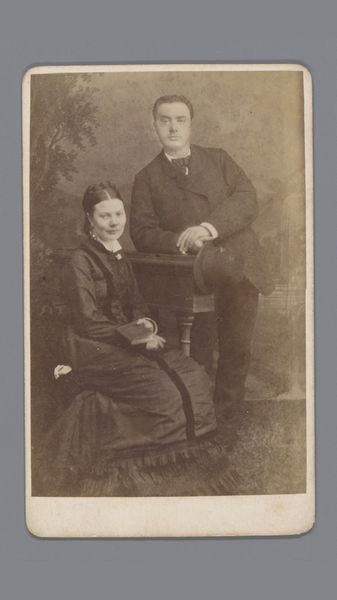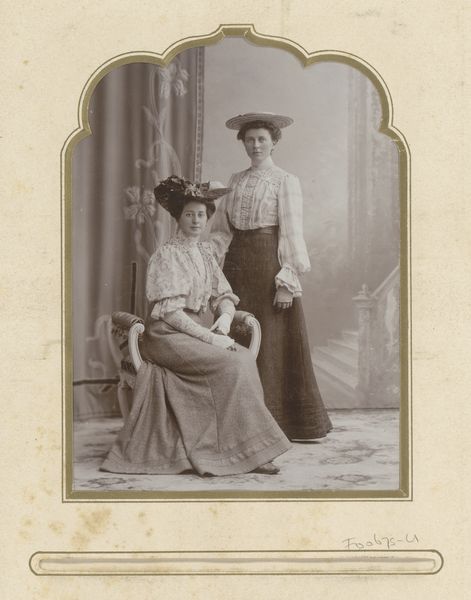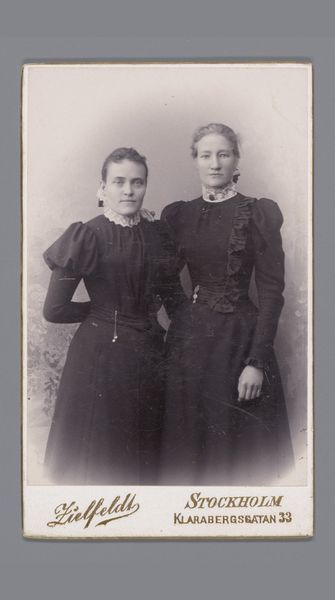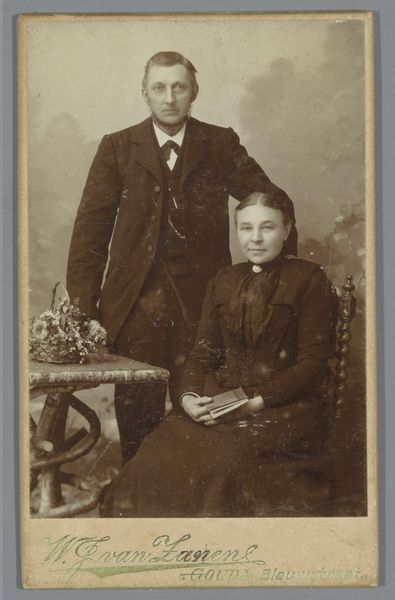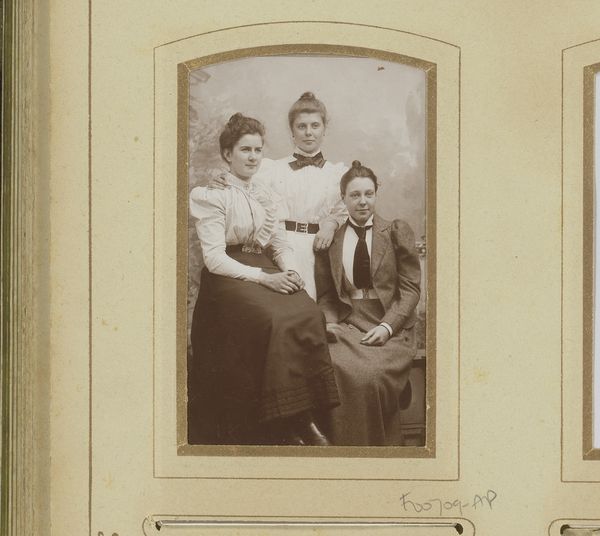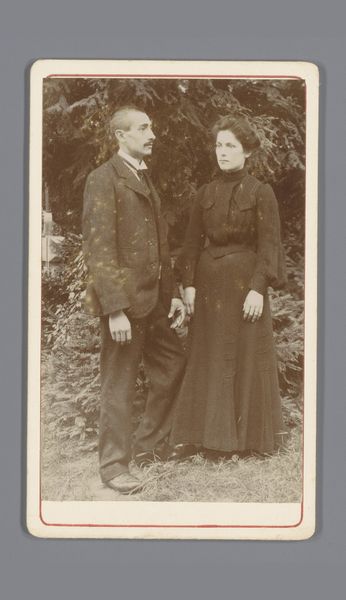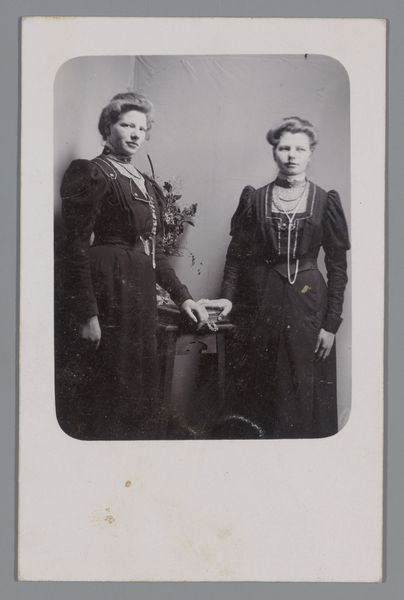
Portret van een staande vrouw en een zittende oude vrouw 1880 - 1920
0:00
0:00
photography
#
portrait
#
photography
#
genre-painting
#
realism
Dimensions: height 83 mm, width 51 mm
Copyright: Rijks Museum: Open Domain
Editor: This photograph, entitled "Portrait of a Standing Woman and a Seated Old Woman," was produced sometime between 1880 and 1920 by Stockholms Föstoringsaffär. It's quite stark, mainly shades of gray. What stands out to you in its composition? Curator: I’m immediately drawn to the contrast in textures and forms. Notice how the younger woman's crisp, light-colored blouse stands against the heavy, dark skirt. The sharp lines of her clothing create a visual tension with the softer, almost dissolving edges surrounding the older woman seated. It begs the question, what does this light/dark contrast communicate in terms of space? Editor: That's interesting! So you are saying that it sets off some differences of the material through which it is expressed, especially looking into the values in this photograph. I guess it uses tone for spacial orientation. Curator: Precisely. We also must observe the picture plane. Look at the deliberate placement of the figures. The verticality of the standing woman is directly opposing to the seated posture, emphasizing differences in age or perhaps even social roles. How do their respective positions play off one another, not just physically but formally? Editor: Hmm, it’s like a balanced equation of standing and sitting, light and shadow. Is the soft focus then an attempt to maybe unify these binaries that you are describing by removing harsh delineation? Curator: Exactly! That’s what I was hoping you would observe! The use of soft focus helps create a pictorial space that blends disparate forms. The soft focus renders form vague or indefinite, and by that nature invites questions about form and feeling, that perhaps an amateur observer would be distracted by with crisp realism. Editor: That makes so much sense! I hadn’t thought about the composition as deliberately constructing those relationships using both figures and values, especially within the form itself. Curator: By focusing on the formal elements, we start to see how a seemingly simple portrait transcends mere representation and enters the realm of artistic expression and symbolic exploration through photography!
Comments
No comments
Be the first to comment and join the conversation on the ultimate creative platform.
